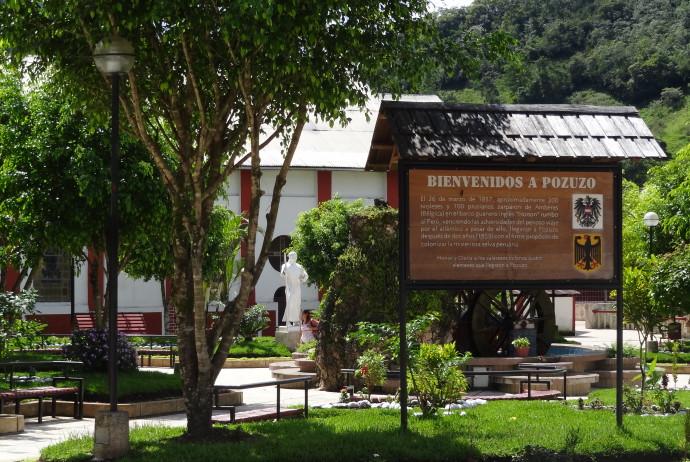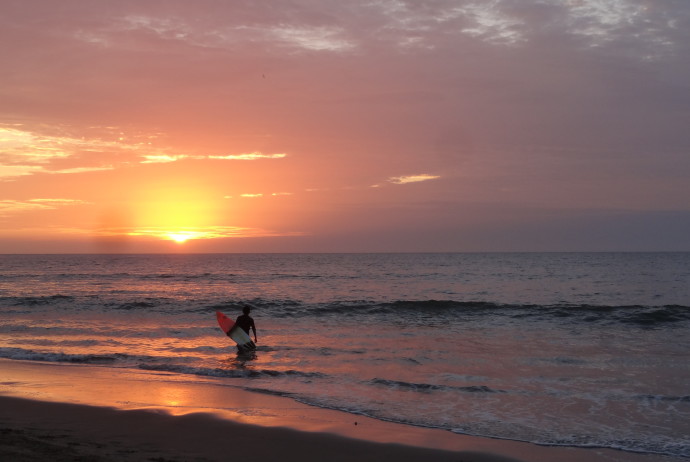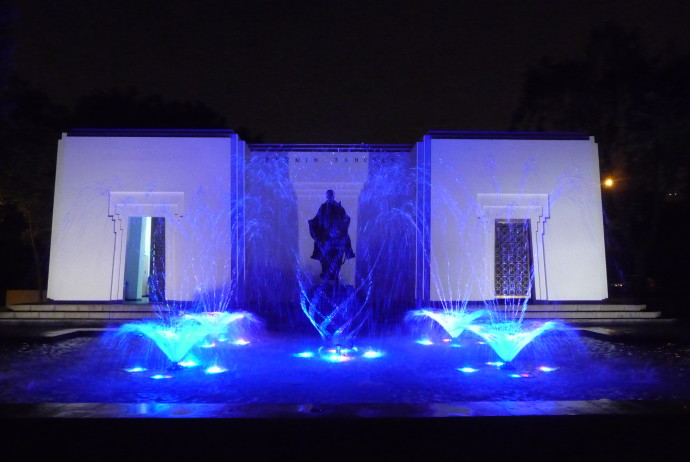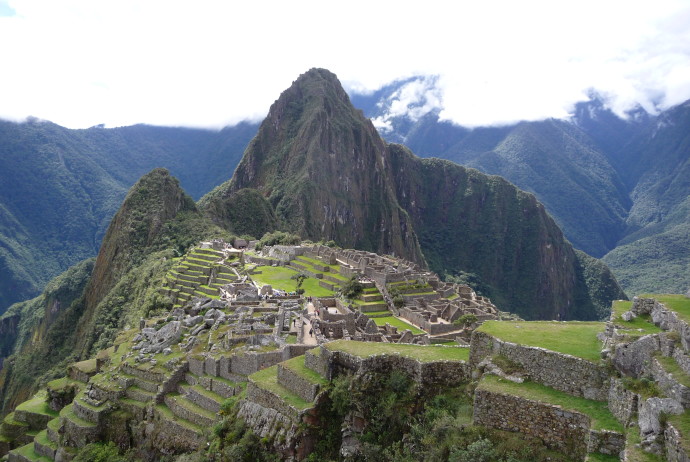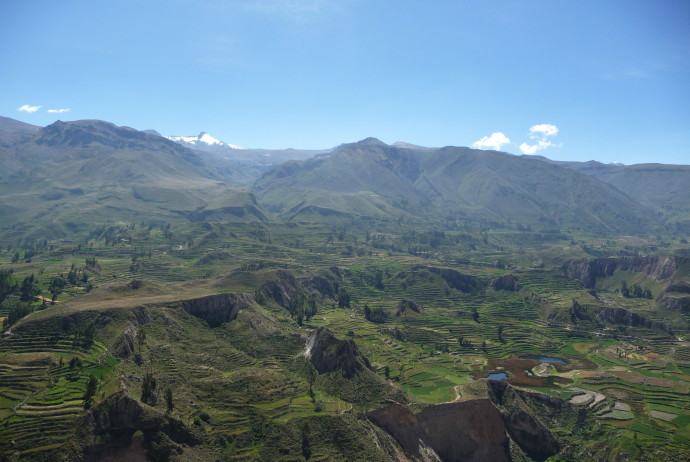Mit besonderer Widmung meiner lieben Oma.
Diesmal habe ich ein Ziel gewählt, das wirklich abseits aller Touristenpfaden liegt. So abseits, dass sogar Nicky und Patrick gestreikt haben, dorthin mitzukommen. Nicht einmal die meisten Einheimischen kennen diesen versteckten Ort. Wie ich dann darauf gekommen bin? Meine Oma verfolgt die Geschichte dieses Auswandererdorfs aus 1859 mit großem Interesse und da ich in Lima praktisch “vor Ort” (hier in Südamerika sind knapp 500km mitten in den Regenwald ja eigentlich noch “ums Eck” wie wir bereits aus Arequipa und unserem Besuch im Colca Canyon wissen – siehe Blogeintrag) bin, musste ich dort natürlich auf jeden Fall einmal hinfahren um es mir persönlich anzusehen.
Ich wünschte ich hätte die Gesichter der Leute gefilmt, als ich mich nach dem Weg nach Pozuzo erkundigt habe: Entweder spiegelte sich darauf komplette Unkenntnis, blankes Entsetzen in so eine entlegene Gegend zu fahren oder einfach nur Ungläubigkeit. Jedenfalls haben wir Tränen gelacht dank dieser dezent abschrekenden aber doch sehr amüsanten Reaktionen. Auch schon allein um die Bustickets zu kaufen, war es notwendig in eine Gegend zu fahren, deren Betreten bereits untertags für Touristen nicht empfohlen wird und daher nachts erst recht gemieden werden sollte. Dennoch, mein Bus fuhr um 19 Uhr ab, aber ein bisschen Nervenkitzel hat noch nie jemandem geschadet.
Ebenso abenteuerlich war dann auch die eigentliche Fahrt dorthin, führte sie doch durch Nacht und Nebel über kurvige Straßen vom auf Meeresspiegel gelegenen Lima bis auf zwischenzeitlich über 4.000m. Ich muss auch zugeben, bereits das Zwischenziel OxaPAMPA ist schon recht ironisch, liegt Pozuzo doch tief versteckt im Regenwald. Von Oxampampa aus (10 Stunden Busfahrt von Lima) ist es erforderlich einen Minibus zu nehmen, der über halb weggespülte Straßen weitere 3 Stunden nach Pozuzo holpert. Im Dorf verriet man mir dann, dass diese Straße nach einem Erdrutsch schon einmal für zwei Monate komplett gesperrt war, und deshalb neu in den Berg gesprengt wurde. Zum Glück war zum Zeitpunkt meines Besuchs die Regenzeit fast vorbei und so musste der Fahrer die Straße nur ein paar Mal händisch von Steinen befreien um zu passieren.
Endlich angekommen, wurde ich nach Tiroler Brauch, sehr herzlich begrüßt und freundlich in Pozuzo aufgenommen. Einen bleibenden Eindruck hat unter anderem Franz Heinrich bei mir hinterlassen. Der Name klingt doch nach einem Urtiroler, richtig? Und auch als er so vor mir stand in der Touristeninformation in seiner Lederhose, erinnerte er mich sehr an mein geliebtes Heimatland. In völligem Kontrast dazu stand allerdings sein südamerikanisches Aussehen und vor allem die Tatsache, dass er nur Spanisch mit starkem Dialekt sprach. Insgesamt also ein etwas bizarres Bild. Auch sonst ist der Ort eine bunte Mischung aus österreichisch-deutscher und südamerikanischer Kultur. So befindet sich etwa das Restaurant Tiroler Adler, in dem man Gulasch und Wiener Schnitzel bekommt und die südamerikanische Version eines Apfelstrudels in Form eines Bananenstrudels, direkt neben typisch peruanischen Lokalen. Ebenso läuft man Statuen und Gedenktafeln mit deutscher Inschrift über den Weg und im nächsten Moment kämpft man damit, spanischen Wegbeschreibungen zu einem Aussichtspunkt zu folgen. Souvenierläden verkaufen Andenken mit deutschen Sprüchen – von welchen die meisten allerdings grammatikalisch und sprachlich völlig falsch sind.
Und so ergibt sich für mich ein lebendiges Bild von Pozuzo, das sich einerseits auf seine Tiroler (und deutschen) Wurzeln besinnt, allerdings auch den beständigen Einflüssen südamerikanischer Kultur nicht verschlossen bleibt und sich so im Bewusstsein beider Kulturen ständig weiterentwickelt.
In Pozuzo
Essen & Trinken: Tiroler Adler – typisches Tiroler Essen mit südamerikanischen Einflüssen
Wohnen: La Chela Hostel – preisgünstige Zimmer mit Basiseinrichtung. Allerdings steht eine breite Auswahl an Unterkünften zur Verfügung, häufig auch von Tiroler Auswanderern geführt.
Unternehmungen: Von einem Spaziergang zu einem netten Ausgangspunkt unweit des Dorfes bis hin zu weiteren Wanderungen zu spektakulären Wasserfällen mitten im Regenwald ist alles möglich.
written and experienced by Lisa
